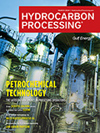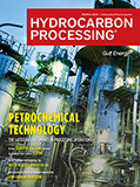Refining
Vietnam's largest refinery to boost operating capacity by 15%-20%
Vietnam's largest refinery Nghi Son said it will boost its operating capacity by 15% to 20% in order to ensure stable supplies.
Russian oil refining capacity idled by drones reaches 14% of total
Russia's oil refining capacity that was shut down by drone attacks has reached 14% of total.
PetroChina's Jieyang refinery to receive first Venezuelan oil cargo
PetroChina's Jieyang refinery will receive its first direct crude oil cargo from Venezuela, according to trade sources and ship tracking data on Kpler, after Washington temporarily lifted sanctions on the OPEC producer.
U.S. crude and gasoline stockpiles fall as refining ramps up
U.S. crude oil stockpiles fell unexpectedly last week as exports rose and refiners continued to increase activity, while gasoline inventories decreased more than expected.
Russia considers altering maintenance schedule at oil refineries
Russian Energy Minister Nikolai Shulginov said that the government and companies are in discussions about changes to the schedule of maintenance at oil refineries to tackle damaged downstream capacity.
bp's Indiana (U.S.) refinery back to normal operations after Feb outage
bp’s 435,000-bpd Whiting, Indiana (U.S.), refinery has returned to normal operations for the first time since a February plantwide power outage.
Italy's Saras reports drop in 2023 core profit of refined products ahead of Vitol's takeover
Saras reported a 41% fall in its full-year comparable core earnings due partly to weaker profitability of refined products, as global commodity trader Vitol prepares to take over the Italian oil refiner later this year.
Vietnam's Dung Quat refinery: will keep selling products during maintenance period
Vietnam's Binh Son Refining and Petrochemical will continue selling refined petroleum products from its Dung Quat refinery during a 50-day maintenance period at the facility.
Ukrainian drones attack Russian oil refinery in Kaluga region
Ukraine attacked a small oil refinery in Russia's Kaluga region with drones, causing damage in an operation that was conducted by the GUR military spy agency.
Report: 80% of Petrochemical Process Engineers Concerned Power Equipment Could Affect Refinery Operations
New reports exploring the European petrochemicals industry has discovered over 80% of its process engineering professionals are concerned their current power equipment could affect refinery operations.

- Lummus expands R&D capabilities to enhance innovation and water and wastewater technologies 4/17
- Niger plans to build diesel refinery and increase supplies to Mali 4/17
- BASF, SABIC, and Linde celebrate the start-up of the world's first large-scale electrically heated steam cracking furnace 4/17
- U.S. crude stocks rise, gasoline, distillate inventories fall 4/17
- Russia's offline primary oil refining capacity revised up for April 4/17
- Russia cuts railway gasoline exports by 26.5% in April so far 4/17




